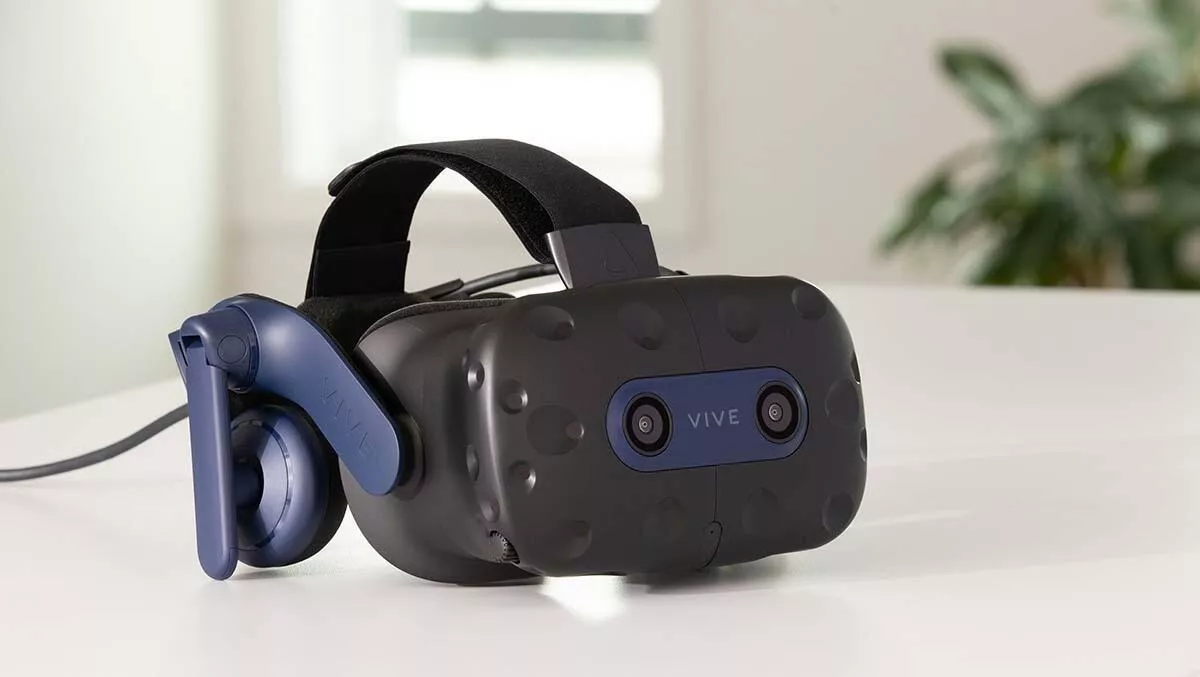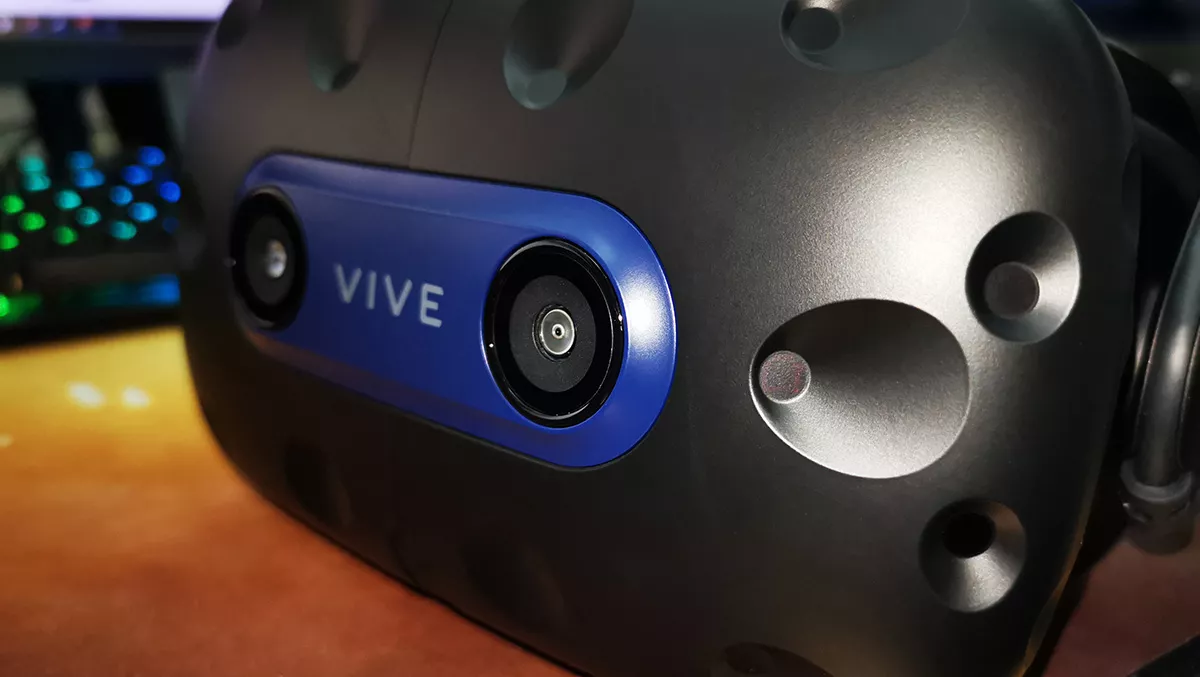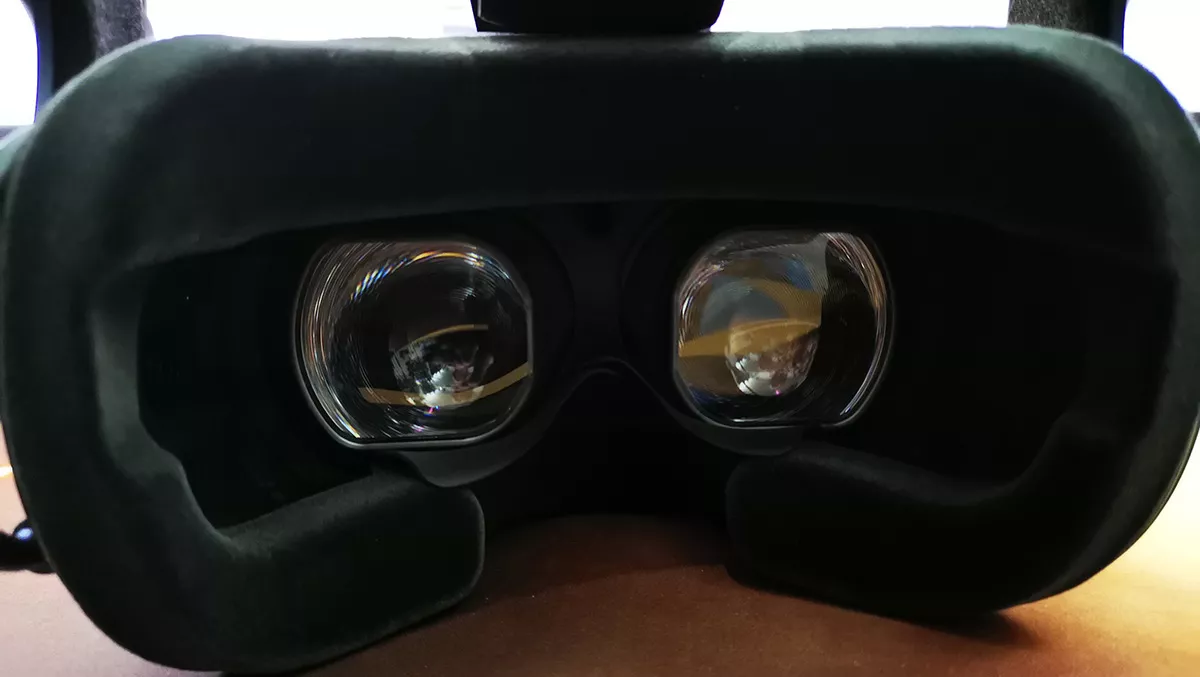
Hands-on review: HTC Vive Pro 2 VR headset
HTC's follow-up to its commercial-level HMD, the Vive Pro 2, takes aim at both professional and high-end gaming users.
Whilst the original Vive Pro was aimed pretty much exclusively at industrial and commercial users, the Vive Pro 2 is also being marketed as a premium VR solution for gamers. And I really can't blame them for doing so. The replacement for the original consumer-orientated Vive, the Vive Cosmos, improved the visuals but fell short on several other aspects.
You won't find the new Vive Pro 2 in your local consumer electronics retailer. For consumers, the only way to get a Vive Pro 2 is via the Vive website. Even then, it is only available as just the headset in the ANZ region — no retail package includes the necessary IR base stations or controllers. They are available separately, but I guess that HTC anticipates the Pro 2 as being an upgrade for existing users who already have the accessories.
Out of the box, the Pro 2 looks almost identical to its predecessor. It's a big headset, weighing about the same as the original Vive but less than the Vive Cosmos (with the Tracking Faceplate).

The first thing that that I noticed when I picked it up was just how robust it felt. The original Vive and Cosmos feel like they are made from eggshells in comparison. Whilst I don't think it'll bounce, the Vive Pro 2 seems built for a bit of abuse.
The front of the headset has two pass-through cameras and a full array of sensors (as opposed to the reduced amount on the Cosmos Tracking Faceplate). The left side of the headset has an on/off button and a button for adjusting the distance between the lenses and your eyes. Handy for people with large glasses (although I could still wear glasses and have the lenses right up close without rubbing against them). The right side has a dial to adjust the IPD (interpupillary distance), i.e. the distance between your eyes. Adjusting this dial also brings up a cross which helps find the sweet spot when you put it on.
The left side of the integrated audio headset has volume controls, while the mic mute button is on the right side. The audio components can be removed and a third-party audio headset used in its place. There are a couple of plastic discs included that are used to cover the headphone connectors, if they are removed, to keep things tidy.
Unlike the base Vive Cosmos, Oculus Rift S, and the myriad Windows Mixed Reality VR headsets, the Vive Pro uses SteamVR infra-red Lighthouse base stations for extremely precise tracking. These aren't cheap and need a higher level of technical expertise to position and get up and running. As OG Vive/Cosmos owners, we already had the base stations mounted to the office walls and a pair of Vive controllers. Whilst a pain to initially set up, this extra effort pays dividends in that the base stations track the headset and the controller to a much higher degree of fidelity than any other method.
Putting on the Pro 2, as with most VR HMDs, it took a while to find the sweet spot — the point which you need to position your eyes over the lenses to clearly see the display. It seemed smaller than the original Vive's but similar to that of the Cosmos. A bit of careful adjustment, and I was good to go.
The Pro 2's stated 120-degree wide field-of-view was glorious compared to what I've been used to with the Vive Cosmos. The Cosmos has a 110-degree field of view on paper, but this translates to about 90-degrees in practice. With the lenses as close to my eyes as possible, the Pro 2 presented me with a breathtakingly wide vista.
Checking the horizontal and vertical FOV with the ROV Test FOV - Resolution SteamVR environment suggested that the horizontal FOV is more like 110-degrees horizontal and 80-degrees vertical. In any case, practically speaking, both the horizontal and vertical FOV are fine in normal use. The normal human horizontal line of sight is 124-degrees, and vertical optimum eye rotation is 55-degrees (which explains why I had to really strain to see the Pro 2's 80-degrees).

The Vive Pro 2, like all of HTC's HMDs, utilises Fresnel lenses to keep the lens thickness down. Tiny concentric rings (which are raised on the inside of the lens) increase refraction without the need for thick lenses. I'm not a fan. The downside of this tech is that bright objects can often produce a glare. Properly fitting the HMD minimises the effect, and you do kind of get used to it.
It sounds odd, but I think that the lenses are spaced too far apart. If your eyes get tired, or you have the lenses positioned far from your eyes, you may see a circular shadow in the middle of your view as the binocular effect gets disrupted. This happened a few times for me.
The Vive Console software defaults to an automatic resolution and display frequency, which may not be optimal. The Vive Console does have a choice of one of five settings which can be manually applied: Performance (2448x1224 @120 Hz), Balanced (3264x1632 @90 Hz), High (3672x1836 @90 Hz), Ultra (4896x2448 @90Hz), and Extreme (4896x2448 @120 Hz). I've no idea why there's no 3672x1836 @120 Hz. These resolutions are the combined resolution of both eyes, the Vive Pro 2 having a pair of 2448 × 2448 low persistence LCD panels.
At first, I was unable to attain a resolution above 3672x1836. The 4896x2448 resolution requires the use of Display Stream Compression (DSC). This a visually lossless compression intrinsic to the DisplayPort 1.4 standard that enables the transfer of the large amount of information required for 5K resolutions. This means not only do you need a beefy GPU to access the Ultra and Extreme settings, but you also need one that is compatible with DSC. Of course, the Vive Pro 2 is backwards compatible with DisplayPort 1.2 for use with older equipment at lower resolutions.
After a bit of backward and forwards between the Vive boffins in Taiwan, I found that I needed to disconnect one of my three monitors (which was overloading the GPU driver) to achieve the Pro 2's top performance settings. I was already pretty impressed with the Pro 2 running at the 4K 3672x1836 resolution. Switching on 5K (4896x2448) blew my mind.
The first thing I tried on the Vive Pro 2 was theBlu. This immersive underwater VR experience was also the first thing that I tried on the original Vive. Standing on a reef some 20m below the surface of the ocean, I watched as realistic-looking fish darted around me. It was just as amazing as the first time I watched them, but this time with no pixelated screen door effect.
With modern graphics cards favouring higher resolutions, the higher fidelity image afforded by the Pro 2 at the Extreme setting didn't give me the performance hit I was expecting. The crisp visuals were complemented by a framerate that didn't skip a beat in most VR applications.
The improved pixel density means that gauges and readouts in Microsoft Flight Simulator were clearer with practically a zero drop in performance using the sim's default VR settings. Looking out of my plane over California, both the scenery and airports looked well-defined and photoreal.

In Digital Combat Simulator (DCS), not only were the gauges easy to read, but try as I might, I could not make myself queasy doing spins and loops because the framerate was rock solid. Flying the UH-1 chopper over Las Vegas was breathtaking.
It's not just about games. HTC is keen to point out that whilst the company appreciates that the technology is sought after by the high-end gaming community, the Vive Pro 2 is intended as a commercial/industrial VR solution.
The better resolution and the broader field of view make watching movies in the free Bigscreen app like sitting in a cinema. Previously I've found watching movies, especially 3D movies, in VR to be a very compromised experience with washed-out details. The Pro 2 changes all that. Again, using Bigscreen, I found it feasible to present in a hosted room using the desktop, having it reproduced crisp and readable in VR for a potential audience.
The Pro 2 also features detachable earphones that do a reasonably good job of reproducing audio. It didn't seem as loud as past Vive HMDs, though. The Deluxe Audio Strap for the OG Vive used to nearly deafen me. The supplied review unit also had a quiet AC hum when there was no other sound. Not really a dealbreaker, but I could definitely hear it. The dual microphones are decent enough for chatting, but I'd not be using them to stream or produce professional audio.
For most users, the Vive Pro 2 will be an over-the-top extravagance. At AU$1299/NZ$1449 for just the headset, it's very expensive. If you've already invested in an OG Vive or Vive Pro and have the base stations and controllers, the Vive Pro 2 makes for a decent upgrade.
Vive Pro 2 owners can opt to use their existing Base Station 1.0 and Vive controllers if they have them, or go for the updated Base Station 2.0s that can be purchased separately. If you can find them, you can even use Valve's Index Knuckles controllers for fully immersive per-finger tracking.
HTC's Vive Pro 2 is the step up that I'd hoped that the Vive Cosmos would be. It may not be cheap, but it should be very appealing for gamers wanting the very best VR experience. The unit is robust and utilises a versatile industry-standard VR system. I can see the Pro 2 becoming de rigueur not only in VR arcades but also across many commercial and industrial VR installations.


